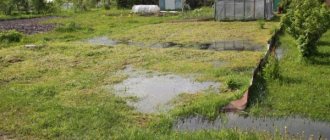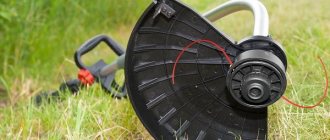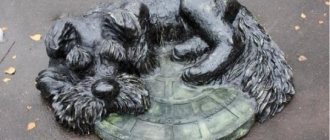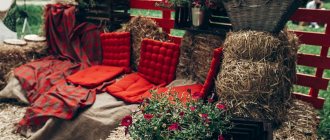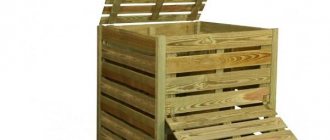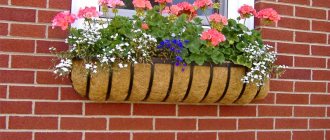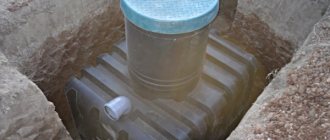Growing tropical plants in our houses and apartments is not so easy. Dry air just kills them, and if not, they don't look their best. Therefore, many people think about how to create suitable conditions for them. Unfortunately, not many people can boast of their own greenhouse or winter garden, but anyone can plant them under glass. We will talk further about how to make a florarium with your own hands. And don't be scared. You will need a little space, at least until the first experiment. Then the number of mini-gardens in the bank begins to grow catastrophically. But the problem with gifts has been solved, because the price of a ready-made garden in a bottle is quite immodest.
What is a florarium
Back in the mid-19th century, someone once came up with the idea of planting plants in a glass container. The experiment turned out to be very successful. The composition looked great, the plants developed and even bloomed. By analogy with aquariums and terrariums, such glass gardens began to be called “florariums”.
There is just a sea of ideas. This is just for starters...
Today, terrariums for flowers are made mainly in special glass or plastic vases, flasks and other containers. Succulents and moss are most often planted. There are people who like to grow tropical plants. They love high humidity, so a closed container is for them. Orchids and other plants that can grow without soil feel great in florariums. Since the containers are sealed, it is possible to create conditions for semi-aquatic and marsh plants, but this version of an aquarium garden is called a paludarium.
Sizes may not be small
If desired, you can buy a mini-garden in a vase. But making a florarium with your own hands is not so difficult, and it will bring much more joy. It may not be easy to find the right combination of soil components and matching plants, but there are some proven combinations. You can see them in the photo, but choosing them yourself is much more interesting.
Composition Basics
When designing a composition, special attention is paid to such aspects as:
- choosing a container for a florarium;
- correct selection of herbal ingredients;
- soil mixture composition;
- drainage;
- decorative elements of the composition.
It is also necessary to provide adequate lighting and ventilation to create comfortable microclimate conditions in the mini-greenhouse.
For florariums, transparent containers made of glass or other translucent bases are used. Special containers are most often produced in the form of a spherical vessel with a hole in the top; some models have a lid.
If desired, you can use any suitable container, for example, a glass teapot or jar, crystal vase, glass or decanter. Transparent tanks, containers, and aquariums of various configurations are suitable.
When designing a mini-greenhouse in glass, plants with similar requirements for environmental conditions are selected. Thus, representatives of the tropics need high air humidity and respond well to spraying. For succulents, it is necessary to create conditions in desert landscapes with a dry and hot climate. Consequently, each of them requires a different soil composition, and the intensity of watering also varies.
Containers for florariums
The sizes of florariums vary widely - from several hundred milliliters to tens and even hundreds of liters. The shapes are also very diverse, but balls and cylinders predominate. To make a florarium with your own hands, it is not necessary to buy a container. If you have an abandoned aquarium of any shape, a large jar or vase, you can use them. True, they must meet certain requirements:
- The container for florariums should help retain moisture. Balls or other containers with holes in the side are perfect for this. It’s a little worse if the hole is on top, but it is of a smaller diameter. Vessels that are even across the entire width are suitable for cacti and succulents. They don't need high humidity. But if you want, you can also plant a tropical plant. But in this case you will need a lid.
A mini-garden can be in the most ordinary jars. It is important that the glass is white and transparent - The height of the container must be sufficient to lay all the necessary layers of soil. Plus, you will need to plant the plants so that their height is taken into account. At least a third of the container should be free, and preferably half.
- The glass must be transparent, not colored. The walls must let in enough light.
An excellent container for a florarium: the humidity level is maintained, the walls are transparent, easy to care for.
For testing, you can make a florarium in a jar of an unusual shape or an inexpensive container. When you master all the intricacies, including the features of care, you will be able to build something more serious.
Instructions for creating flower houses using the Tiffany technique
Find at home or buy ordinary transparent glass 4 mm thick at a hardware store; baguette glass 2 mm thick, used for decorating photo frames and paintings, is also suitable. If there is a glass cutting station nearby, go there: they will sell it and cut it as needed. Just prepare the templates, remembering your school geometry course. The shape can be any, but the easiest way to design a terrarium is from pentagons. The edges of the workpieces are covered with copper tape; if it turns out uneven, they are corrected with a spatula. Next comes the assembly. The parts are held together using tin, solder, and a soldering iron. Right away the product will not be very neat, especially the seams. But after patination the situation changes. Patina can be purchased in black, silver, or gold. It is applied like paint.
The process is not easy; you need to understand not only geometry, but also be able to cut glass, solder, and carefully handle seams. There is a simpler option - made of durable plastic. In this case, you will need a stationery knife, tape for temporarily fastening the parts of the polyhedron, superglue, masking tape and colored varnish for decorating the seams. The essence of the process does not change, it is simply done from simple materials.
The Tiffany technique was invented by American designer Louis Tiffany in the 1880s, for which he received the Grand Prix at the Paris Universal Exhibition. This is the son of the founder of the world famous TIFFANY brand, which still produces the best jewelry today.
What plants to plant
The choice of plants for a florarium is limited by the volume in which you plan to pack them. For beginners, it is best to start with succulents and cacti. Species diversity, different shapes and colors allow you to create different compositions. These plants do not grow too quickly and require minimal care.
Moss and succulents make very cute and varied compositions.
As a short-term project, you can make a florarium with early flowering bulbous plants. These are snowdrops (all types), tulips, hyacinths, etc. The time can be chosen so that by the appointed date (New Year, birthday, March 8, etc.) the flowers release buds or begin to bloom.
The simplest version of a garden in a vase is bulbous plants
When creating compositions, it is advisable to select the composition of plants not only by appearance. It is easier to care for a mini-garden in a vase if the plants have the same growing conditions. In this case, they can be planted in the ground. But if you are using "non-dwarf" sized plants, it is easier to remove from the pot. The pots are camouflaged with sand or decorative stones.
A similar technique - in separate pots - allows you to grow plants in one florarium that need to be cared for differently. But then you need to remember what, when and in what quantity to water, feed, etc. This is not acceptable for everyone, as it requires attention.
Plants for mini-greenhouses
The creation of tropical florariums involves the use of the following plant species:
- Mini ferns. Pteris, multirow, asplenum and adiantum are planted as key figures in the composition or used as an openwork addition to more densely growing representatives of the tropics;
- Mosses. Classic sphagnum moss can create a bright green coating of high density. Flower shops also offer other varieties of bryophytes with unusually beautiful foliage structure and even species with a metallic sheen;
- Crotons. The culture is valued as the most vibrant type of decorative foliage plants for florariums in terms of shades and patterns;
- Selaginella. The openwork and dense foliage enchants with its complex structure. The decorative qualities of this tropical beauty are fully revealed in the humid environment of a glass mini-greenhouse;
- Orchids. Most often, these capricious flowers are grown in the company of relatives or in splendid isolation. A florarium with orchids is called an orchidarium; the composition requires the installation of heating and ventilation systems.
In tropical florariums, mini-violets, ground cover fittonia, mini cyclamens, miniature varieties of ivy and rhododendrons, gusmania and cryptangus, soleirolia and creeping ficus are also relevant.
Succulents for the garden in a jar
Succulents are the most popular when creating florariums, and for good reason. They are usually easy to care for, small in size, do not grow too quickly, and look exotic and different. Moreover, even one type of succulent can differ significantly in appearance, be of different shapes and have different colors of “leaves”, different flowers, etc. Just keep in mind that they do not like high humidity, so when choosing a vase, choose one with a wide neck. And one more thing: they will need to be watered very rarely, and so that not the entire layer of soil/sand gets wet. It will be necessary to make a thick drainage layer, and use coarse sand with the addition of soil as soil.
Try making your first florarium from succulents and cacti
Haworthia
Does not bloom, but has decoratively colored lancet leaves. Undemanding to temperature and humidity conditions. Can be used in combination with more demanding plants. It does not like wet soil too much and can rot if moisture gets into the sockets.
Easy to care for Haworthia succulents
Aptenia
Flowering plant, small bright pink, lilac, white flowers. The leaves are fleshy and small. It is not too demanding on growing conditions and tolerates both high and low humidity.
Aptenia can be successfully grown in a vase
Monanthes
There is Monanthes in the form of a very small shrub, and there is a herbaceous one. Can create cushion-like dense clumps. The stems are erect with a leafy rosette at the top. Some species are in bloom. It is not too picky about temperature, does not like high humidity, but needs good lighting. A period of rest with a decrease in temperature in winter is desirable.
Small-sized plants are suitable for the smallest florariums
Piaranthus
It has a very unusual shape - the stems are creeping and consist of segments. Each segment has several “teeth”. Combined with its unusual coloring - various shades of green and brownish-green, and the star-shaped flowers - this plant will attract attention. Can be the center of a composition. The care requirements are low; you should only protect them from direct sunlight in the summer.
Unusual bright flowers and strange stems
Argyroderma
The very unusual shape of the plant, combined with the silvery tint of the leaves, gave rise to their popular name - living stones. The shape of the leaves resembles small pebbles (usually no more than 2 cm), from which a large and bright flower grows. It is generally undemanding in terms of conditions.
Flowering stones are an interesting addition to a glass garden
Conophytum
This type of succulent is also called living rock. The shapes of the leaves are even more strange and unusual. The flowers are very similar to daisies - bright and large. They have a clear growing season and dormancy. Vegetation usually occurs in winter, dormancy occurs in the summer months.
The shapes of the leaves are the most unusual. And these plants live on Earth?
Echeveria
This type of succulent is also called stone rose. Care is simple, just don’t touch the leaves with your hands. They are covered with a thin coating that wears off when touched. But since the florarium is an almost closed container, the likelihood of plaque damage is low. Another feature is that a rest period with a temperature of about 15°C is required.
The stone rose is not that unusual, but it looks great on rocks and sand.
Lithops
Lithops also look like stones that suddenly bloomed. They differ in that they can change the color of the leaves to match the color of the soil. They grow very well on rocky soil and can withstand high temperatures. They are similar in care to cacti, so they can be combined. They grow slowly and require bright light for normal development.
Another plant from another world
These are not all succulents and there are also no less interesting ones, but even these are enough to create a couple of thousand different compositions.
Florarim in the form of a desert landscape
The easiest to create and maintain will be a florarium with succulents. Moreover, in the end it looks quite unusual and exotic.
To create such a florarium, take a wide flat container, for example, a glass vase for sweets. You also need to buy special soil for cacti - such soil can be found in any hardware store. You will also need to purchase the succulents themselves (do not neglect painted cacti - your composition will look brighter with them). As a decorative element, you can buy pebbles or expanded clay.
Before you start filling the vase, it should be thoroughly washed, dried and removed from grease. Next, the bottom of the vessel must be filled: one quarter with expanded clay and pebbles, the remaining three with soil. In total, the vessel should be filled to three quarters of its height. Cacti should be planted at a short distance from each other; succulents should not be buried low. After sprinkling small pebbles on top of the composition, you need to compact the soil with careful movements.
Mosses for florariums
Stabilized mosses are often used for florariums. This is ordinary moss, in which the water is replaced with a special solution, which, as it were, preserves the plant. It is not dry in appearance or to the touch, but all biological processes have stopped.
Moss can be the only plant in a mini-florarium
More common and easily accessible is Sphagnum moss; in florist shops you can buy a variety that is more suitable for the planned planting conditions. In general, “ordinary” moss can be found almost anywhere where there is enough moisture. In any case, near a well, in a storm drain, etc. Just pick up a certain amount, then place it on the soil, stones, etc.
This is sphagnum
You can grow moss specially - on stones and snags. It will take time, of course, but the result is worth it. If there are seeds, use them; if not, pick up any moss along with the soil in which it grows. Next, take kefir (preferably organic) or molasses, or whey (unpasteurized), add a nutrient medium. The simplest option is grated potatoes into porridge. Add moss to this mixture and mix everything in a blender. Using an old brush, apply to the places where the moss should take root. Since mini-gardens require microscopic doses, you can do without a mixer, just mix the composition well.
Trends in florarium design
As in any form of creativity, the creation of florariums has its own trends, tendencies, and current techniques. They talk about the principles of aesthetics that should be followed in order to remain “in fashion.”
Of course, it is not necessary to strictly follow them, but it is necessary to get acquainted with them in order to be able to find the direction and style in which you want to work. So let's get acquainted:
Coniferous compositions
They will create a great “winter” atmosphere. The needles will look best in polyhedral flasks, and it is ideal if the sides of the flask are trimmed with wood.
Cubic large format florarium
A florarium filled with mosses, driftwood and algae-like plants is also on trend. By the way, you can plant, for example, a small land snail in such a floririum - you get a whole terrarium.
Flasks in the form of vases or bottles
Orchids or other exotic original flowers are placed inside the flasks; the flasks look incredibly attractive.
Flask glass
A stabilized rose is placed inside, it looks fresh, original and even fabulous.
Various-sized florarium spheres
With succulents, suspended in the air at different levels, they create an inexpressible airiness, lightness, and enchanting atmosphere.
Creating florariums and caring for them is an amazing, attractive art that is not so difficult to master, but you will want to enjoy the result again and again! And this is a fascinating creative process, which our online hypermarket will help facilitate. Flasks of non-standard shapes and sizes, grounds, decor - the most difficult thing will be required of you: let your imagination fly to create a small masterpiece - an oasis in glass!
How to replace moss (ground cover plants)
Very similar to Nertera moss. It is also called coral moss, but it is simply a miniature herbaceous plant. It is interesting because, under favorable conditions, it is covered with bright orange, no less bright yellow or lilac/dark blue, purple, and white berries.
Coral moss or Nertera. This plant can be a decoration, but it is difficult to get berries to appear in a jar or ball
Selaginella Krausa and Selaginella Jory. These are compact tropical plants with a leaf height of 2-5 cm. They form dense cushions of bright greenery. They can successfully replace moss.
Two more plants that can replace moss in a florarium
Soleirolia. In nature, it forms small mounds about 5 cm high. The foliage is green, in different shades. Long thin shoots with very small leaves. In recent years, varieties with silver and golden foliage have been developed.
Tropics in the aquarium
Many consider florariums to be exclusively compositions with tropical plants or those that love high humidity. Since there is no clear terminology, this point of view cannot be called erroneous. In any case, this is also a mini-garden, but not in a glass or jar, but in a more or less large aquarium.
In a large space you can create more interesting compositions
When choosing plants for a florarium with tropical vegetation, the determining factor is the growing conditions. The second thing people pay attention to is the size to which an adult plant grows. Another point is the growth rate. The best choice is slow growing. Below is a list of plants that are recommended for such compositions.
- Rosette Fittonia (Verschaffelta, silver veined, dwarf species)
- ferns
- episcia
- Pilea
- royal begonia
- nephrolepis
- Cryptanthus bromeliads
- Pilea parvifolia
One of the most popular plants for growing in a florarium is Fittonia.
- nephrolepis
Air plants can live without any soil at all.
- ivies (Spetchley, variegated, Little Diamond, Tre Coupe)
You can create themed compositions
- violets
arrowroot
Each group has a large number of varieties that differ not only in color, but also in size. You can always select a group with similar care and growing conditions, and one that will not grow very quickly. Another option is plants that can tolerate frequent pruning. Or rather, they don’t react too negatively to them. In high humidity conditions this can become a problem.
Required materials and tools
You can create a beautiful florarium from the simplest and most affordable materials. The choice is influenced by the type of glass jar, complexity and filling of the composition.
Before starting work, you should check the availability of the necessary materials and tools according to the following list:
- Tall transparent jar;
- Fertilized, disinfected soil;
- Sand, small stones;
- Wood, activated carbon;
- Plants for the greenhouse;
- Decorative elements (plastic houses, ladders, wood chips);
- Tools: spatula, spray bottle, watering can.
Homemade florarium
Once you have decided on the composition of the plants, you can think about what soil to plant them in. The composition of the soil itself is selected according to the requirements of the plants. We can only discuss the composition for cacti and succulents: two parts of turf-clay soil, one part each of humus and river sand, you can add more brick chips. Before making a florarium, let's talk about the sequence of layers. You will need to stock up on sufficient materials.
The “assembly” itself takes a few minutes. But before making a florarium, you have to spend a lot of time selecting plants and determining the optimal soil composition
Creating a composition
Determining where to plant plants takes place in two stages. The first is when selecting plants. You imagine what and how it should look. There are several rules when creating a composition:
- If the florarium, garden in a jar or bottle is visible only from one side, we plant taller plants in the background. They can be placed along the back wall. Moreover, an uneven “relief” looks more interesting - plants of different shapes, colors and heights (if there are several of them).
Phalaenopsis are ideal candidates for growing in a glass or jar - If the composition should be viewed from all sides, the tallest plant is in the center, then to the edges - in descending order.
- In small compositions, the principle of the triangle is observed: one plant is tall, about a third of the space is occupied by a plantation of medium height, the rest is low-growing, ground cover.
- For small florariums with flowering plants, it is the flower that usually takes the lead. All other decoration only emphasizes its beauty.
When you have already bought all the plants, before planting, install them first in the soil already poured into the container. It may well turn out that something needs to be moved, swapped, or even removed. This should be done before you begin to remove the plants from the pots.
In pots or in the ground
As we said earlier, you can plant plants in a florarium directly in the ground, or you can leave them in pots. Each option has its own advantages. Plants in pots can be easily removed, moved, and replaced. In this case, minimal damage will be caused to neighboring plants. But then the composition of the soil is generally unimportant - you can simply fill the gap with pebbles, crushed stone, and decorate the top. This option is also good if the plants have different watering and feeding regimes. This can be done in pots.
The process of planting plants in a florarium
The advantage of planting in the ground is the creation of a unified ecosystem. If you decide to plant without pots, carefully remove the plants and remove as much soil from the roots as possible with your hands. Make a hole in the soil of the florarium (using a wire loop, a miniature spatula, or your hands). Size - so that the roots fit freely. You plant the plant, sprinkle it, compact the soil. When everything is planted, water it.
Soil layer by layer
In general, in most cases, the following sequence of layers for a garden in a vase/glass/jar is recommended:
- A layer of stones of the middle fraction. We are usually talking about pebbles - with rounded edges. The thickness of the layer is about 5 cm. The purpose of this layer is clear - excess moisture accumulates in it.
- Charcoal. The carbon serves as a filter that prevents nutrients from leaking out. It is also a kind of flora stabilizer and helps maintain humidity. The thickness of the coal layer is 2 cm or so.
- Next, the actual soil that is suitable for your plants. Its thickness should be sufficient for the existing root system. If you expect plants to grow, you can make it thicker. In any case, after planting the plants, at least 1/3 of the height of the container should remain unoccupied.
One of the options for planting plants in a florarium.
Here, in fact, is the basic composition of the soil for a florarium. But since plants of even the same species feel good in different soils, the layers change. And sometimes even for the sake of appearance. Therefore, there is only one piece of advice worth following: there should be a layer at the bottom where excess moisture can accumulate.
The only thing we don’t recommend is using expanded clay instead of pebbles for the bottom layer or filling it between plants. Despite popular belief, it absorbs moisture. Moreover, it also accumulates salts dissolved in water. After a while, the soil becomes too salty for most plants.
Possible variations of soil laying
What other soil can be used for planting plants in a florarium? Here are the possible variations:
- Instead of one fraction of stones, two can be used. Medium, fine on top, and then coal on top of it.
- Pour sand at the bottom - under the pebbles. This option is good for growing succulents.
- Separate the stones and coal (sometimes you put soil right away) with a garden net with a fine mesh (1 mm), you can use garden spunbond. This barrier will prevent the layers from mixing.
You can use dried sphagnum as a layer - it will stabilize soil moisture - For plants whose root systems require air supply, you can only use pebbles or crushed stone, you can put stones along the edges, pour soil inside, delimiting the layers with a strip of the same spunbond or a mesh.
- You can lay the bark of conifers along the edges - it both stabilizes moisture and acts as an antiseptic, and as a recharge - as it decomposes, nutrients will be washed into the soil. If you break it into small components, you can use it to cover the soil from above.
One important point: if you find pebbles and sand yourself, the materials must be disinfected. They are either calcined in the oven or boiled for half an hour. After boiling, it is dried and only then used. The same must be done with driftwood.
Site selection and care
The place for installing the decorative composition is chosen depending on the requirements of the inhabitants of the florarium for lighting conditions. If there is a shortage of natural light, it is easy to correct the situation with the help of special lighting devices. It is recommended to plant plants in containers in a centered manner, placing tall individuals in the middle and small ones around them. In this case, when the glass container is periodically rotated in relation to the light source to ensure uniform growth, the decorative effect of the object will always be at its best.
It is worth remembering that succulents require a lot of light, but direct exposure to the rays should not be allowed to eliminate the risk of burns on the leaves. Representatives of tropical flora tolerate partial shade well, so the container with ferns can be placed a little further from the window.
Since a glass vessel maintains its own microclimate, it is easy to create a suitable temperature regime for its inhabitants in a florarium. Air humidity is regulated based on watering and spraying. Succulents and cacti are watered once every two weeks; they are not afraid of even prolonged drought, but react negatively to excess moisture. For tropical individuals, frequent spraying and high air humidity are favorable. There is no need to fertilize the plants in the florarium; however, it is recommended to change the soil every 2 years.
Florarium care
In this section we will describe the features of caring for plants in a closed or almost closed container. Moisture evaporates from glass containers much more slowly, so be prepared to water less often. No one can give specific advice - conditions and plants, sizes and parameters of containers - all this is different. Just look at the condition of the soil and the “inhabitants” of the florarium.
Secrets of caring for a miniature florarium
While the soil is wet, drops settle on the glass and evaporation is visible. When the glass becomes transparent, wait a few days and you can water it. The duration of the “pause” depends on the plants. If these are succulents, the “dry” period can be a week or two. For other plants - several days. Once again: it all depends on the moisture-loving nature of the inhabitants.
A few words about how to care for a mini-garden in a jar, glass, vase. The most convenient way is a plastic bottle with a lid, equipped with a long spout. These plastic bottles come in hair dye (wash and soak in water), and some medications are packaged in them. In pharmacies you can find empty ones called “dropper bottles”. They also have a dispenser. You can buy it in craft stores or find something similar in hardware stores. In general, whoever seeks will find.
Using a plastic bottle with a lid and a long straw, it’s easy to water a mini-garden
Another option is a large syringe without a needle. It is ideal for spot root watering, fertilization, etc. That is, where careful and dosed application is important.
If we talk about spraying, then you can look for any small spray bottle. For very miniature ones, pumps for medicines and cosmetics are suitable. Of course, they should be washed thoroughly.
How to make a florarium with your own hands
To create an interesting art object in the form of a small flower arrangement in a transparent container, you need to prepare the following materials and equipment:
- Glass vessel. You can buy a special tank for the florarium or use dishes and other glass household items;
- Plants for planting. For beginners, succulents are easier to use;
- Priming. The soil mixture is prepared depending on the type of crops selected;
- Drainage. They use pebbles, expanded clay, broken bricks, and coarse river sand. A layer of colored decorative sand looks bright and original;
- Decor. To decorate the florarium, figurines made of polystone, glass or plastic are used. This could be a miniature castle or lighthouse, decorative pebbles, colored sand, figurines of exotic animals or mythical creatures;
- Tweezers, stick or spoon;
- Spray bottle or syringe for watering and spraying.
Sequence of work:
- It is necessary to create good drainage at the bottom of the vessel from the selected materials. It is worth remembering that the drainage layer makes up 1/3 of the soil.
- For a beautiful effect, you can lay a thin layer of colored pebbles on top of the drainage.
- Next, pour out the soil and moisten the composition with a spray bottle. Use a stick or spoon to prepare holes for planting.
- Using tweezers if necessary, you need to plant the selected crops according to the intended pattern. The soil around the plants should be lightly compacted. The seedlings are watered using a syringe.
Next, decorative elements are placed, the open surface is covered with moss or colored sand. At the end, you need to spray the entire composition with water.
Florariums are popular in interior design of apartments and offices. This interesting art object can captivate with its spectacular appearance, and it is not difficult to create an original composition yourself.
Photo for inspiration
If you have reached the end of this article, which cannot be called short, you are definitely interested in a mini-garden in glass. All that remains is to decide how exactly you will arrange it and in what container. Several photos for inspiration are collected in this section. Enjoy! And good luck!
Aquatic plants don't need soil - just water. Dwarf phalaenopsis feels great in the air - increased humidity for the roots is guaranteed, and it doesn’t need more
Unusual interior decorations from mini florariums in glass balls
A lamp from a florarium solves two problems at once: lighting and illumination of plants
The jar lid can be used to install the LED light
Gift ideas for March 8th - gentle, unusual
Driftwood with bindweed in a glass jar - picturesque
This is not a fern, but plants similar to it
Interior solutions for flower lovers
Unusual compositions
You can create a garden landscape, recreate mountain landscapes
The choice of container is limited only by the transparency of the glass - it should be crystal, without shades
Glasses, glasses - original decorations made of fresh flowers for the table
You don't have to buy a rare plant. From what is “at hand” very good compositions are obtained
The containers are the same, the miniatures are different
This florarium is a complete work of art
A little history
The honor of creating the first florarium belongs to the London doctor Nathaniel Ward. Quite by accident, he discovered that ferns, fashionable in the 19th century, were more likely to grow under glass covers than in smoky rooms heated by stoves. In addition, in this case, the flowers could survive with virtually no watering. Soon the “Ward's casket” became a decoration of secular salons and was used to transport plants from the tropics to Europe. IN THE PHOTO: Ward's casket - a prototype of modern florariums
After the abolition of the glass tax, another Englishman, S. Hibberd, came up with the idea of a “green window.” The structure was installed on the windowsill, thereby transforming an ordinary street view into a beautiful landscape.
The fashion for florariums spread throughout the world, reached the peak of popularity, gradually declined in the last century and triumphantly returns in the current one.

